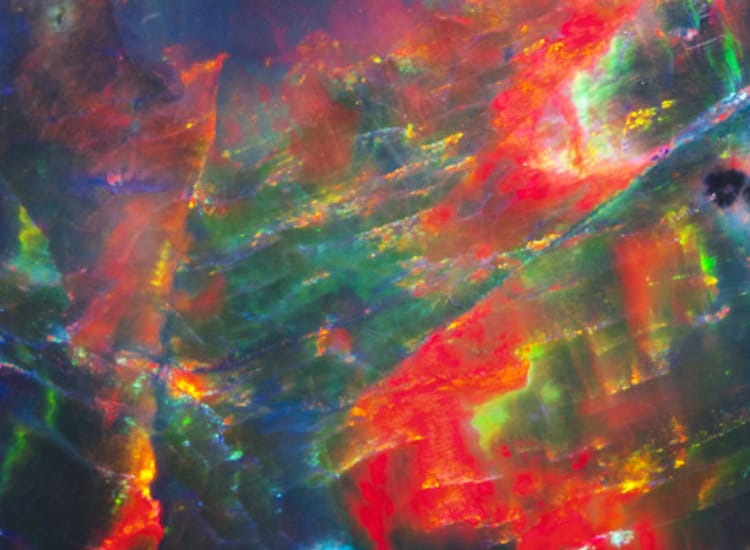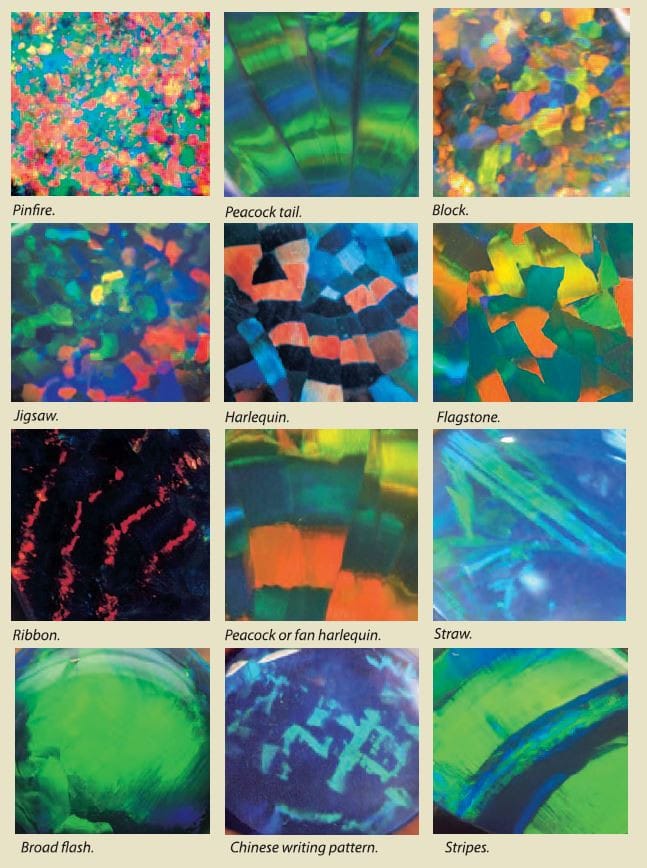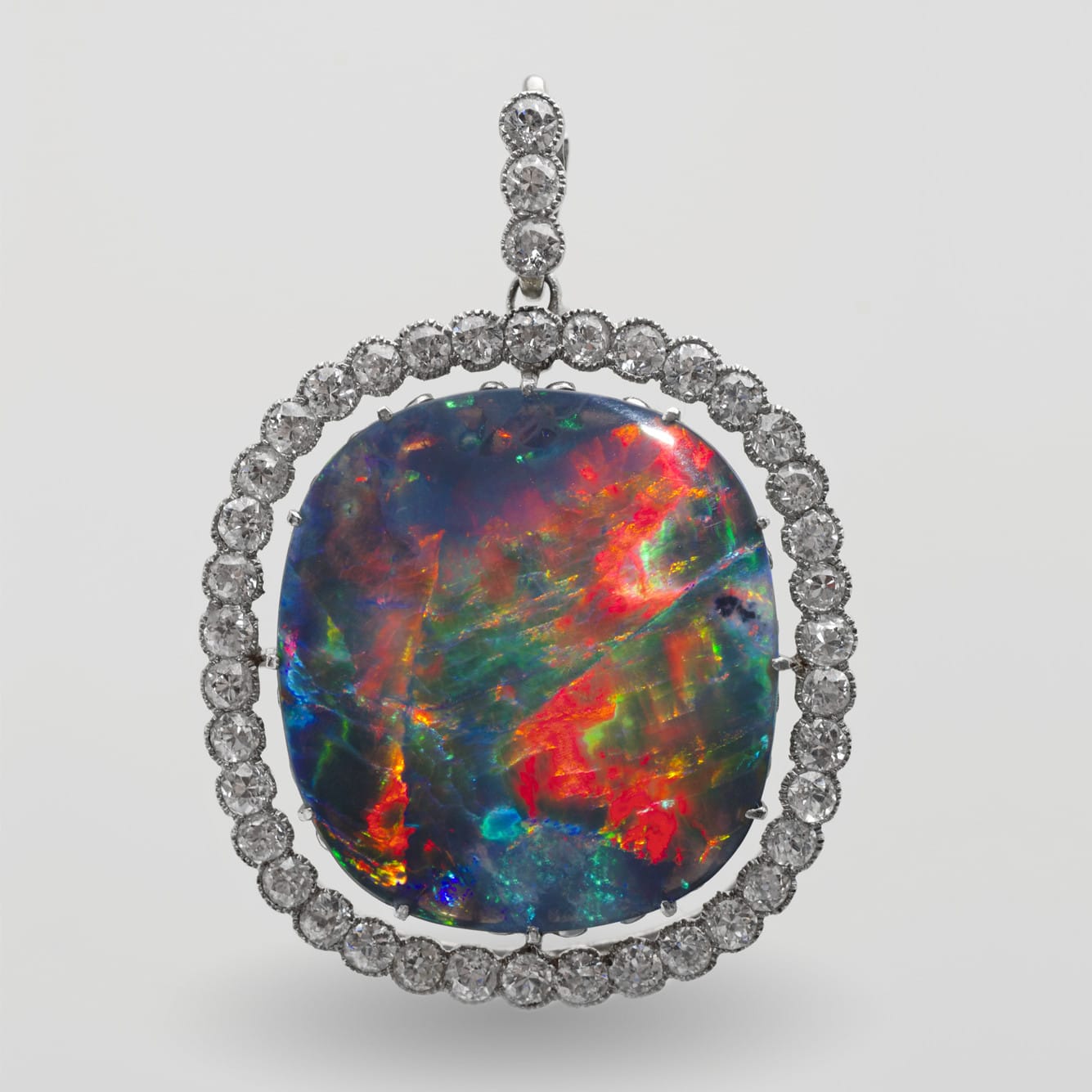Colors and Characteristics of Opal

Although not referring to opals, the words used by 18th century English poet James Thomson summarise well the fascination many have with opals and their play-of-colour patterns:
“But who can paint
Like Nature? Can imagination boast,
Amid its gay creation, hues like hers?”
Each opal specimen is unique, and valuation is thus a challenging undertaking. In the following we will cover different quality factors for opal, based on criteria described in the book by Andrew and Damien Cody – The Opal Story- published in 2008.
- Type of opal: It is important to determine the type of opal. For instance, a dark boulder opal may produce a similar colour display to a black opal. However, the black opal will command a higher price.
- Brilliance: The degree of brightness is of paramount importance. An opal cannot be valuable without this attribute.
- Body tone: The degree of darkness in the body tone, in regard to black or boulder opal, is taken into consideration when assessing the value. A black body colour is more valuable than a grey or light body tone, when all other factors are equal.
- Transparency: White opal is more desirable when it has a degree of transparency (i.e. light shining through it) and if lively, brilliant colours are present in opals with a certain amount of transparency, they are most highly prized.
- Patterns: Interesting patterns of the diffracted colours are rare and, when combined with brilliance, can have an enormous impact on the value.
- Dominant diffracted colours: Great care needs to be taken when applying this factor, remembering that type and brilliance override all other factors – i.e.: a blue/green brilliant stone will usually be more valuable than a dull red stone. However, the dominant colour has decreasing value in this order: red, orange, yellow, green, blue, indigo and violet – with red and orange colours being the most valued. This rule is more particular to black opals. Strong red colour-play in a dark body-toned black opal is the most valuable.
- Thickness of the colour bar: The colour bar is the part of the opal that shows play-of-colour. Greater thickness of the bar enables a domed surface to be cut from the rough stone, thereby increasing value.
- Shapes: Precious opal is usually cut into oval, pear or round shapes. However, many opals are also cut in fancy shapes, thus preserving partly the shape of the rough opal specimen.

A selection of some of the incredible patterns that can be found in black opals. Source: Cody (2008).

An example of different sizes of colour bars (the area containing play-of-colour) in Australian black opal. Photos: Cody Opal.

Opal pendant
Source: SSEF